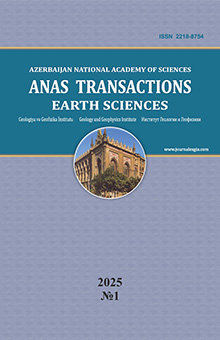Aquifer activity model in hydrocarbon fields (Couth Caspian Basin as a case study)
Salmanov A.M.1, Garagozov E.Sh.2, Ahmadov E.H.3
1 SOCAR, Oil Gas Scientific Research Project Institute, Azerbaijan 88A, Zardabi ave., Baku, AZ1012
2 SOCAR, Azneft PU, Azerbaijan 73, Neftchilar ave., Baku, AZ1000
3 SOCAR Head office, Azerbaijan 121, Haydar Aliyev ave., Baku, AZ1021
Summary
The SCB (South Caspian Basin) is considered one of the world's unique in terms of hydrocarbon reserves. At present, the hydrocarbon potential of the basin has attracted foreign companies to conduct large-scale research here. As a result of these surveys, 120 structures were discovered in the Azerbaijani part of the SCB, of which 21 structures were identified as oil and gas and 17 fields are being developed.
The main purpose of the study is to analize the hydrodynamic activity characteristics of the basin, to improve field models, to develop efficient development scenarios, to more accurately forecast the reserves and resources of the field and, as a result, to develop a modeling of the aquifer basin of the South Caspian Basin. The hydrodynamic activity model of the basin is especially important in the modeling of oil and gas and gascondensate fields. While modeling the hydrocarbon-water contact and the movement mechanism (Fetkovich, Carter Tracy, inactive), for the improvment an effective field development plan, it is necessary to clarify pressure, direction of movement, etc., which is possible only as a result of the compilation and analysis of the basin activity model. The advantage of the study is that the used data from oil and gas fields related to the surrounding basins, and the volumes of gas produced from the basin were calculated in reservoir conditions. In this regard, the research is of great theoretical and practical importance.
Keywords: aquifer, field, formation, field modeling, hydrodynamics, formation pressure, fluid
REFERENCES
Abasov M., Azimov E., Aliyarov R. A. et. al. Theory and practice of geological – geophysical studies and development of marine oil and gas fields: on the example of South-Caspian depression. Azerneshr. Baku, 1997, 203 p.
Ahmadov E.H. Study of water injection efficiency through modern geological-mathematical models in Guneshly field. Journal of Environmental Science and Engineering B, Vol. 2, No. 10, New York, 2013, pp. 574-577.
Ahmadov E.H., Veliyev R.V. Methods of minimization of uncertainties and geological risks based on Umid gas-condensate field. Georesursy, Vol. 21, No. 1, 2019, pp. 92-98.
Iskenderov M.M., Abuzarova A.G., Kazimov R.R., Samedzade A.A. Some results of lithological and facies analysis of terrigenous deposits of the productive stratum in the zone of the Sangachal-Duvanny-Khara-Zira adasy uplifts. Azerbaijan Oil Industry, No. 9, 2017, pp. 3-11 (in Russian).
Narimanov A.A. Regional oil-bearing complex of the South Caspian Depression. Conference Materials “Structure and Oil and Gas Content of Inland Sea Depressions”. Moscow, 1998, pp. 81-89 (in Russian).
Rahimov F.V., Ahmadov E.H., Khasayev A.G. Studying the influence of estimation parameters on oil reserves by taking into account geological risks. III International conference on geology of the Caspian Sea and adjacent reas, Baku, 2019, pp. 1-6.
Salmanov A., Karagozov E., Ahmadov E. New classification model based on complication extents of structures. SOCAR Proceedings, No. 1, 2021, pp. 14-20, http://dx.doi.org/10.5510/ OGP20210100475.
Salmanov A.M., Ahmadov E.H., Rahimov F.V. Geological assessment of reservoir factors of the Umid-Babek area. SOCAR Proceedings, No. 3, 2019, pp. 8-14, http://dx.doi.org/ 10.5510/OGP20190300392 (in Russian).
Shikhova L.F. Regularities in the distribution of reservoir properties of productive series rocks of the Absheron Archipelago fields. Geologist of Azerbaijan, No. 22, 2018, с. 90-101 (in Russian).
Veliyeva E.B. Simulation of Azerbaijani oil deposits in connection with their production. Azerbaijan Oil Industry, No. 1, 1997, pp. 13-16 (in Russian).
Voroshilov V.G. Mathematical modeling in geology. Publishing House TPU.Tomsk, 2001, 124 p. (in Russian).
DOI: 10.33677/ggianas20230200100
